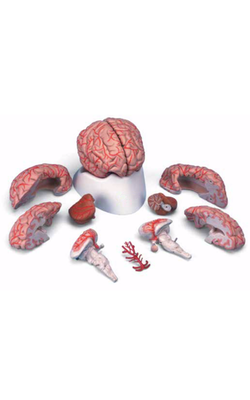Main Model

Mesencephalon : 31 Tectal plate

Internal Anatomy of the Midbrain
General Regions: Tectum, Tegmentum, and Basis
Pedunculi
The midbrain is divisible into three regions, which can be appreciated best in cross section. Posterior to the cerebral aqueduct is the tectum (roof) of the midbrain. The
characteristic structures of this area are the superior and inferior
colliculi. The periaqueductal gray (central gray) is a sleeve of
neuron cell bodies that completely surrounds the cerebral aqueduct. The tegmentum of the midbrain extends from the base of
the tectum to, but does not include, the substantia nigra. The
anterolateral portion of the midbrain on either side is formed by
the basis pedunculi, which consists of the substantia nigra and
the crus cerebri. In turn, the crus cerebri is composed
primarily of descending fibers. The term cerebral peduncle is
sometimes used for the crus cerebri, but it actually represents
the entire midbrain below the tectum (tegmentum and basis
pedunculi).
NOTE:
• Tectum = Tectal plate
- Contains sensory nuclei
- Superior colliculi are visual reflex centers; help visually track moving objects and control reflexes in response to visual stimulus
- Inferior colliculi are auditory reflex centers; control reflexive response to sound